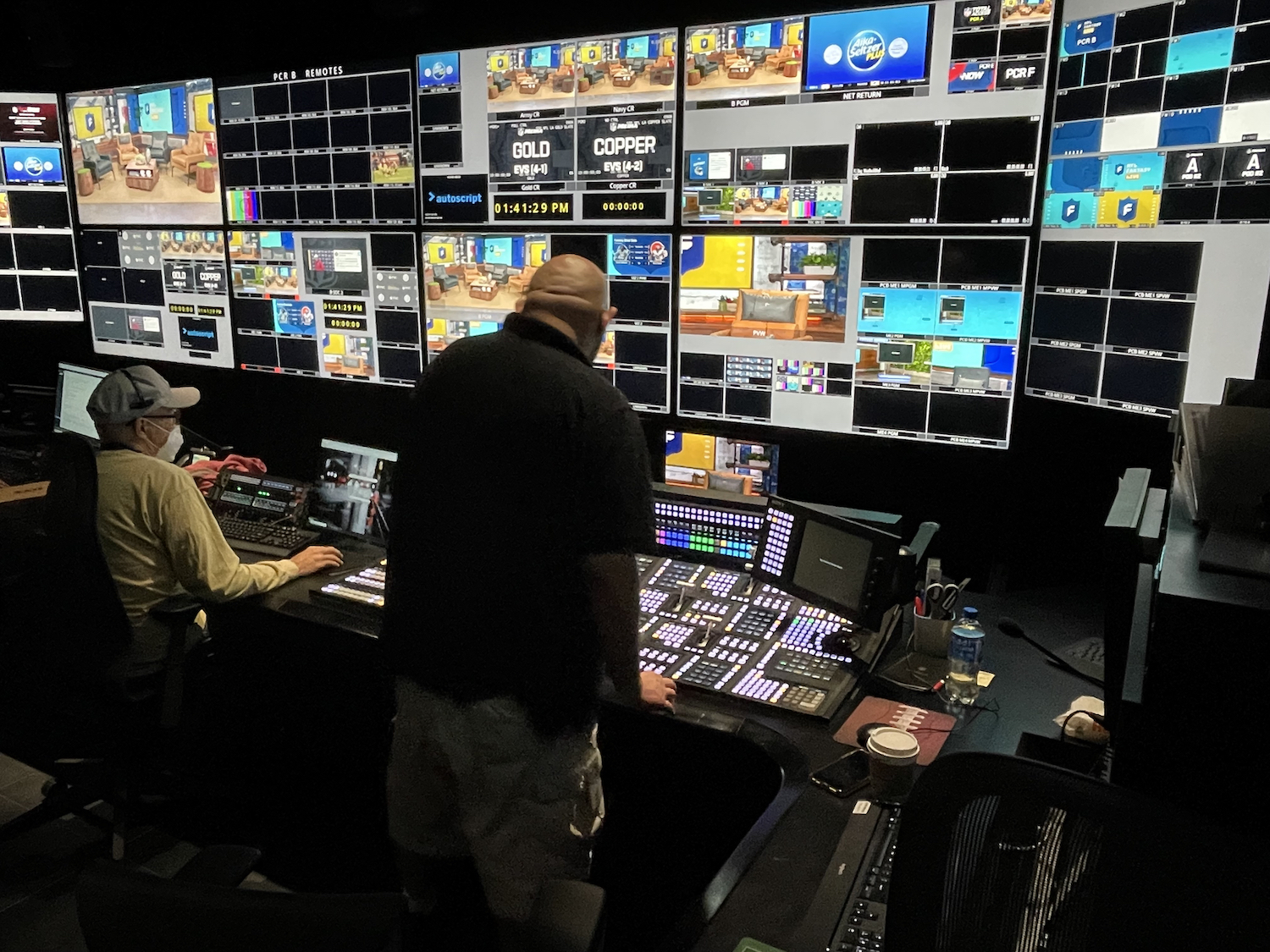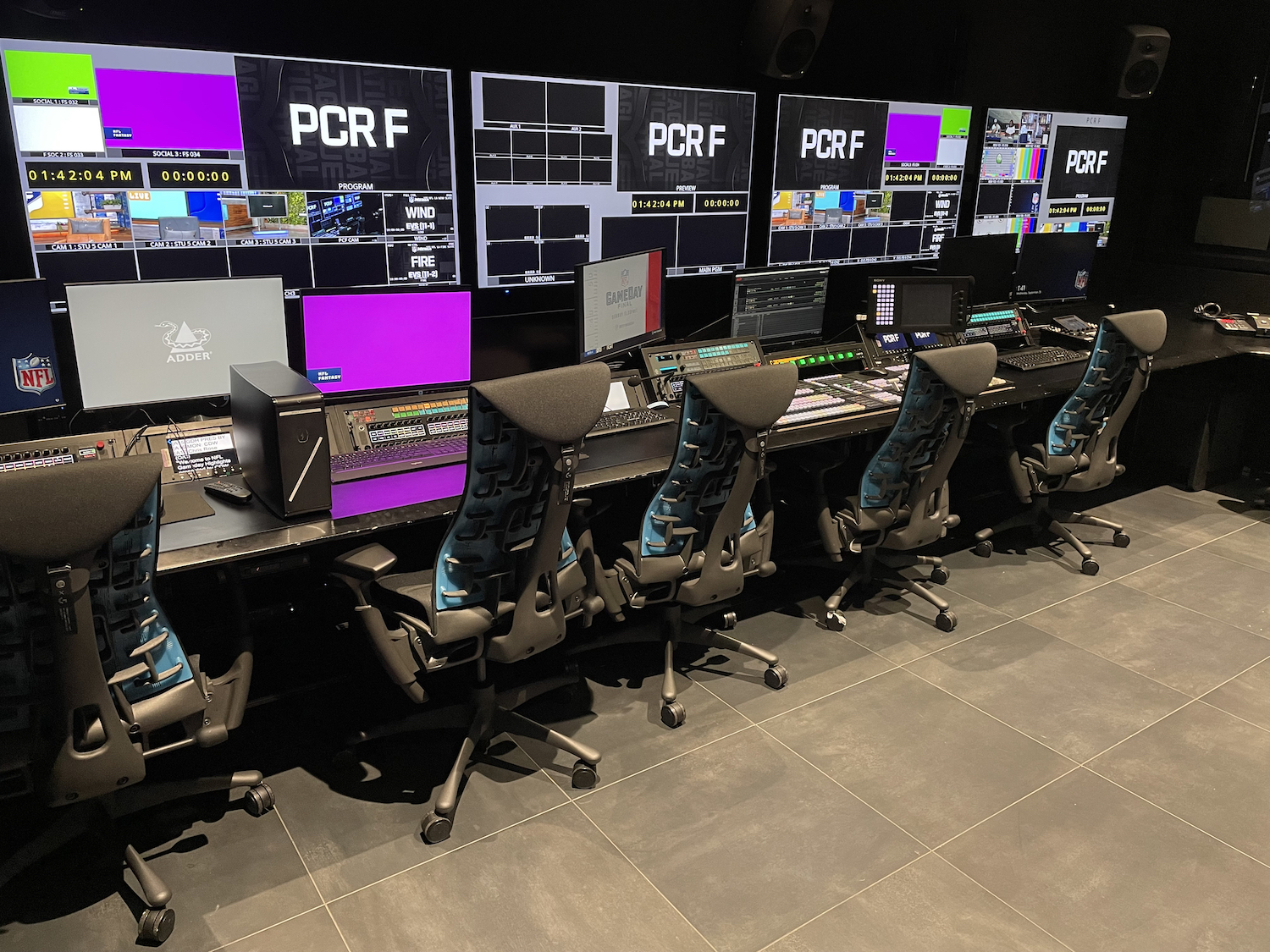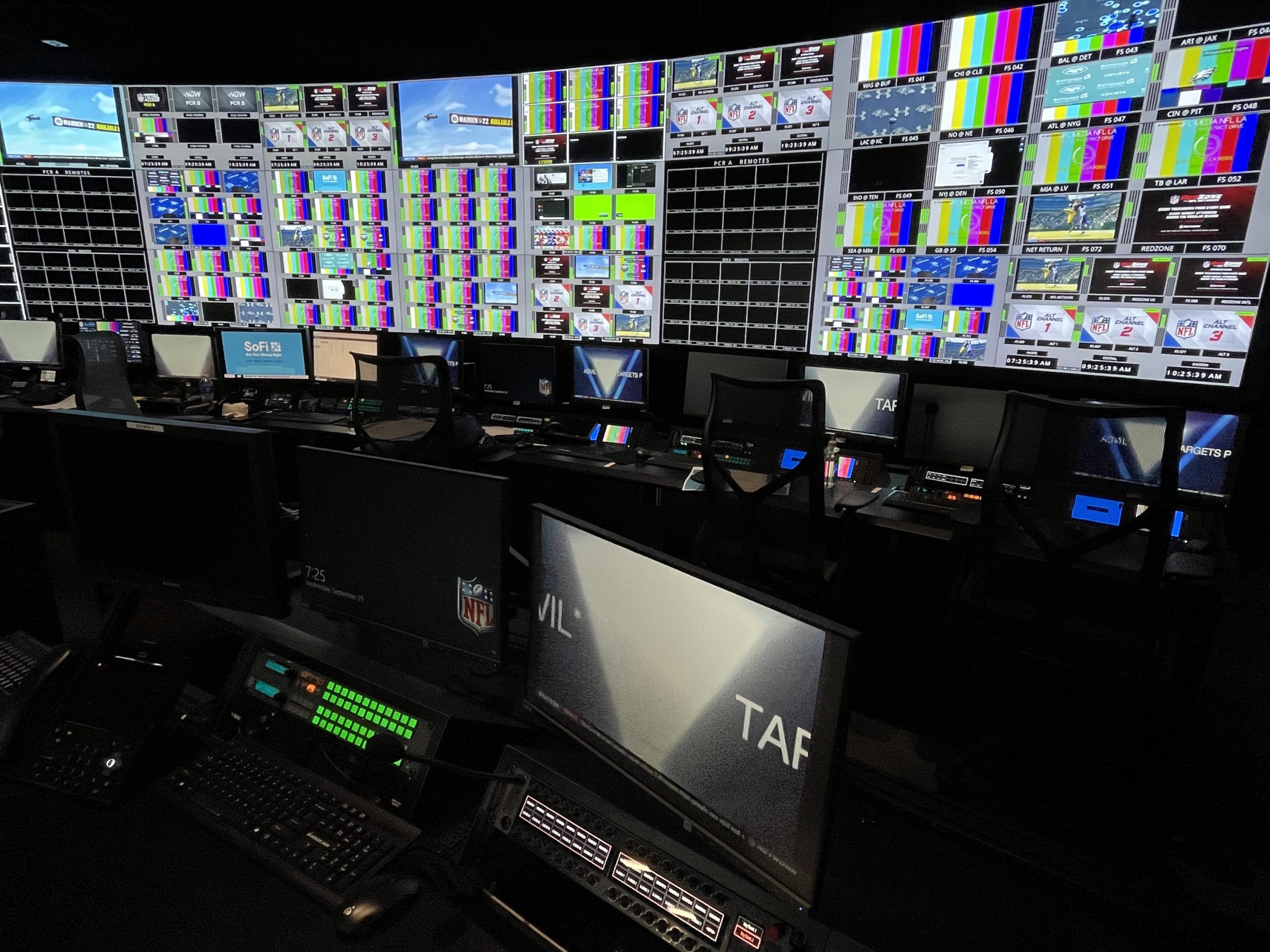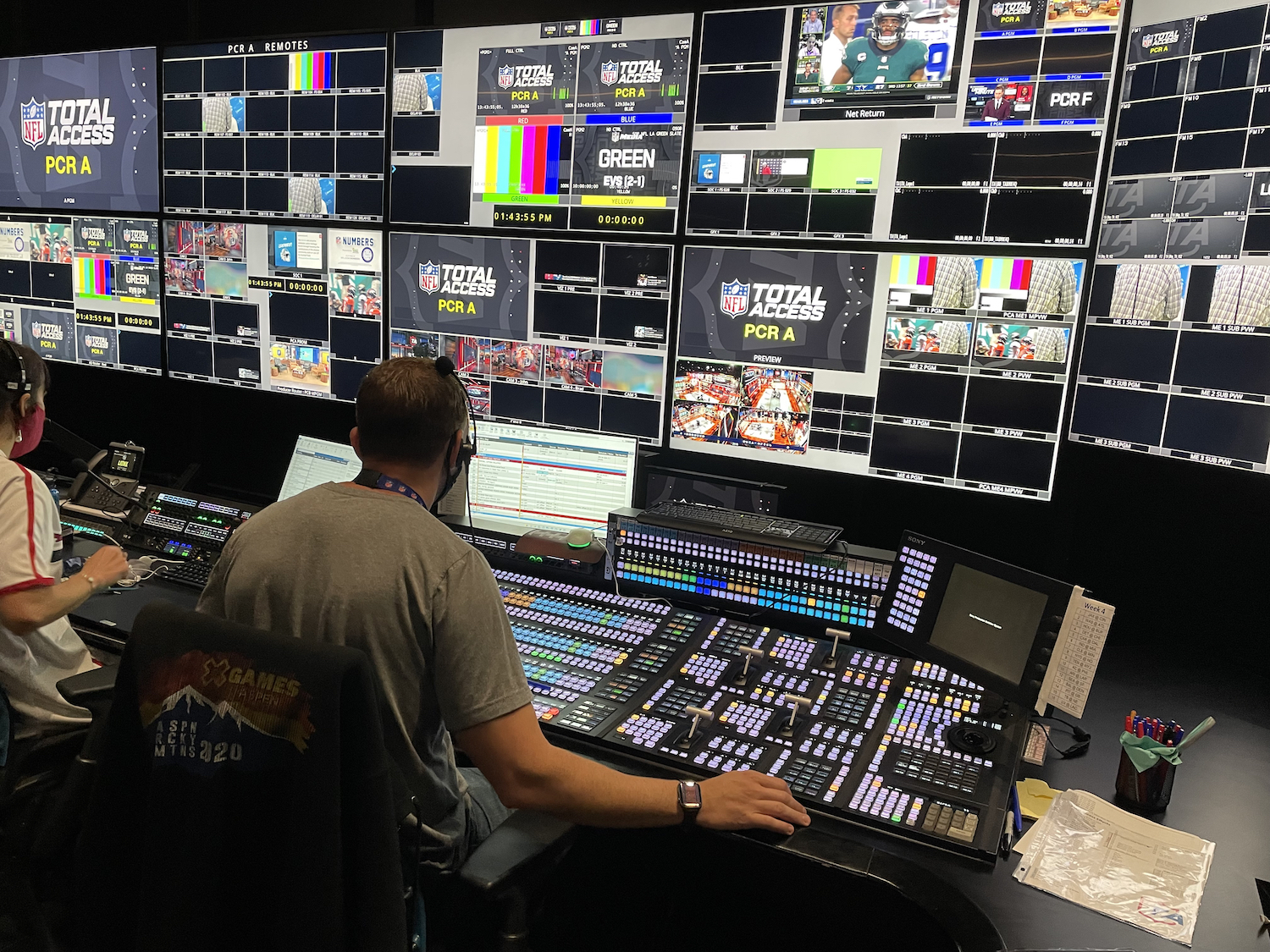Case Study: Multiviewing With Speed and Technique at the NFL
Story Highlights
I joined the broadcast industry 10 years ago, working first for Pac-12 Networks in San Francisco, where we pioneered the idea of at-home production over IP networks for live sports. We built a WAN between the 12 Pac-12 universities, so we only sent cameras and microphones (and talent!) to the site, producing 850 live events from our offices in San Francisco.
I met Bruce Goldfeder, VP of Broadcast Engineering for the NFL, in 2016. He had set the goal to migrate the entire production facility to SMPTE ST 2110 IP. I joined the NFL Network in 2017, and rapidly became a subject expert in all things ST 2110.
Alan Wollenstein, Director Engineering Systems for the NFL, and I built a proof-of-concept lab to evaluate products, as well as test interoperability. I am fortunate in having hands-on experience with nearly every piece of broadcasting gear that supports ST 2110. After nearly a year of testing anything we could get our hands on, Imagine’s Magellan SDNO Control System was selected for the router control and the Selenio Network Processor (SNP) for video processing and multiviewing.
Multiviewing was one of the major challenges for the IP migration project. In live sports production, we need to monitor signals from a variety of sources with immediacy and accuracy. We looked at every multiviewer on the market (seven were capable of ST 2110): what we wanted was a robust, agile, low-latency solution that would fit the way we work and scale as we grow.
Our goal was to provide a system that used ST 2110 but felt like SDI. We had to deliver template building and layout modification; it had to include excellent alarm functionality, and it had to integrate seamlessly with our existing tally system.
The SNP, with its Layout Designer software, met all our requirements. More than that, it opened our eyes to the possibilities of a software-configured device: the flexible SNP frame could be a frame sync one day and a multiviewer the next, with the click of a mouse.
Low latency was a critical factor. Sports is fast-moving, and our operators need to be able to talk to people on-site at events, look at the feeds and see instantly what is happening. It is critical for our key team members to see incoming and outgoing data as close to real time as possible. The SNP-MV multiviewer delivers that low latency: so much so that our operators can match what we are sending from production to the net return.
As well as viewing the signals, we rely on the SNP to process alarms, including tally status, virtual re-entry status, audio meters for two ST 2110-30 streams (for 16 channels), and video alarms like freeze, black and signal loss. We are looking forward to the next software release when we will be able to add monitoring of IP stream status, colorimetry, and ancillary data like VITC and caption decoding.
The NFL Los Angeles facility is format agnostic. We are capable of receiving and creating HD and Ultra HD productions from any of our sources or stages, simultaneously. Our camera CCUs output 1080p and 4k all the time, so the ability of the SNP-MV to accept any format and scale appropriately is another huge benefit. In fact, the NFL Hollywood Park production control rooms have the ability to change from HD to UHD from one event to the next.
Our decision to use SNP-MV multiviewers has been fully vindicated. They allow us to have a distributed monitoring infrastructure; it is simple to set up whatever layouts any operator requires and to switch between them from event to event; they deliver excellent, format-agnostic image quality; and when we do not need a particular multiviewer channel, the SNP path can be reallocated to a completely different task.





